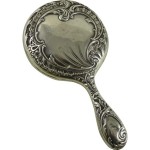Mirrors in the Living Room: Enhancing Space and Style
Mirrors have long been valued for their reflective qualities, serving both practical and decorative purposes. In the context of interior design, mirrors offer a unique ability to transform a living room, impacting its perceived size, brightness, and overall aesthetic. Understanding the strategic placement and selection of mirrors can significantly enhance the ambiance and functionality of this central living space.
One of the primary benefits of incorporating mirrors into a living room is their ability to create an illusion of greater space. In smaller living rooms or those with limited natural light, strategically placed mirrors can effectively double the visual square footage. By reflecting light and the surrounding furnishings, a mirror can make a room feel more open and airy. This effect is particularly pronounced when a mirror reflects a window or a well-lit area.
Maximizing natural light is another key advantage offered by mirrors. A well-positioned mirror can capture and amplify existing natural light sources, brightening even the darkest corners of a room. This can reduce the need for artificial lighting during daylight hours, contributing to energy efficiency and creating a more welcoming atmosphere. Placing a mirror opposite a window is a particularly effective strategy for maximizing natural light penetration.
Beyond their functional benefits, mirrors serve as impactful decorative elements. They can be chosen to complement various design styles, from minimalist and modern to traditional and ornate. The frame of a mirror contributes significantly to its decorative impact, offering opportunities to introduce different materials, textures, and colors into the living room's design scheme. A large, ornately framed mirror can serve as a focal point, while smaller, more subtly framed mirrors can be used to create visual interest without overwhelming the space.
The shape and size of a mirror are also crucial considerations. Large, rectangular mirrors can create a sense of height and grandeur, while smaller, circular or oval mirrors can add a touch of softness and elegance. Multiple smaller mirrors arranged in a gallery wall can add a dynamic and personalized touch, showcasing different frame styles and reflecting varied perspectives of the room.
The placement of a mirror requires careful consideration to maximize its impact. Positioning a mirror opposite a window, as mentioned previously, is an excellent strategy for maximizing natural light. Alternatively, placing a mirror above a fireplace can create a striking focal point and visually expand the height of the room. Avoid placing mirrors directly opposite each other, as this can create a distracting and disorienting infinite reflection effect.
When selecting a mirror for the living room, the existing décor and furniture should inform the choice. Consider the overall style of the room and choose a mirror that complements the existing color palette, textures, and materials. A minimalist living room might benefit from a simple, frameless mirror, while a more traditional space might be enhanced by a mirror with an ornate, gilded frame. The scale of the mirror should also be proportionate to the size of the room and the surrounding furniture.
Mirrors can also be used to highlight specific features within the living room. For example, a mirror placed above a console table can draw attention to decorative objects displayed on the table, while a mirror strategically positioned to reflect a piece of artwork can enhance its visual impact and create a more dynamic interplay of light and color.
Maintaining the cleanliness of mirrors is essential for preserving their reflective qualities and ensuring they contribute positively to the living room aesthetic. Regular dusting and cleaning with a suitable glass cleaner will prevent streaks and smudges, ensuring the mirror reflects light efficiently and maintains its intended decorative impact.
Incorporating mirrors into a living room design offers a versatile and effective way to enhance both the functionality and aesthetic appeal of the space. By carefully considering the size, shape, placement, and style of the mirror, one can maximize its impact, creating a brighter, more spacious, and visually engaging living environment.
Beyond traditional wall-mounted mirrors, consider exploring alternative applications, such as mirrored furniture or decorative mirrored tiles. Mirrored furniture, such as a coffee table or console with mirrored surfaces, can add a touch of glamour and sophistication, while mirrored tiles can be used to create a unique accent wall or backsplash, adding depth and visual interest to the space.
The versatility of mirrors allows them to be incorporated into a wide range of interior design styles. Whether the living room embraces a minimalist, modern, bohemian, or traditional aesthetic, there is a mirror style that can complement and enhance the overall design scheme. The key is to select a mirror that harmonizes with the existing décor and contributes to the desired atmosphere.

10 Impressive Oversized Mirrors To Make Any Room Feel Bigger Large Mirror Living Wall

How To Decorate With Mirrors Decorating Ideas For

5 Easy Ways Living Room Mirrors Can Amp Up Your Space

14 Mesmerizing Living Room Mirror Ideas The Best Mirrors

20 Incredibly Clever Ways To Decorate With Mirrors In A Small Living Room Michael Helwig Interiors

How To Decorate Your Living Room With Mirrors Beautiful Homes

Top 10 Wall Mirror Designs For Your Living Room

Make A Dark Room Feel Brighter With These Design S Large Mirror Living Dining Mirrors

Large Living Room Mirrors Visualhunt

Styling Mirrors How To Decorate With Around The Home








